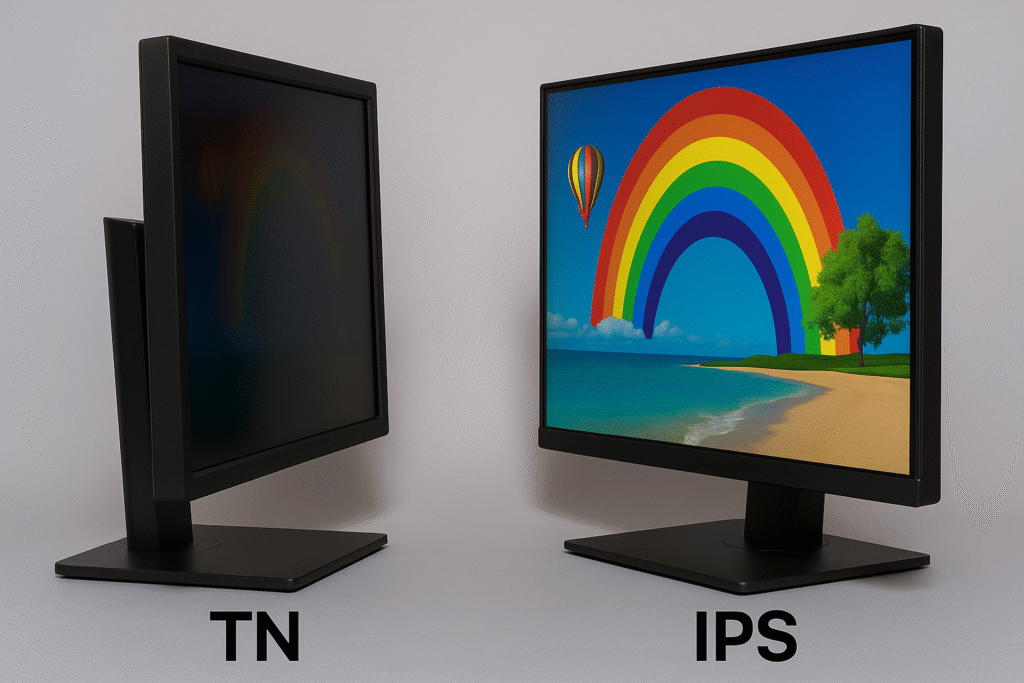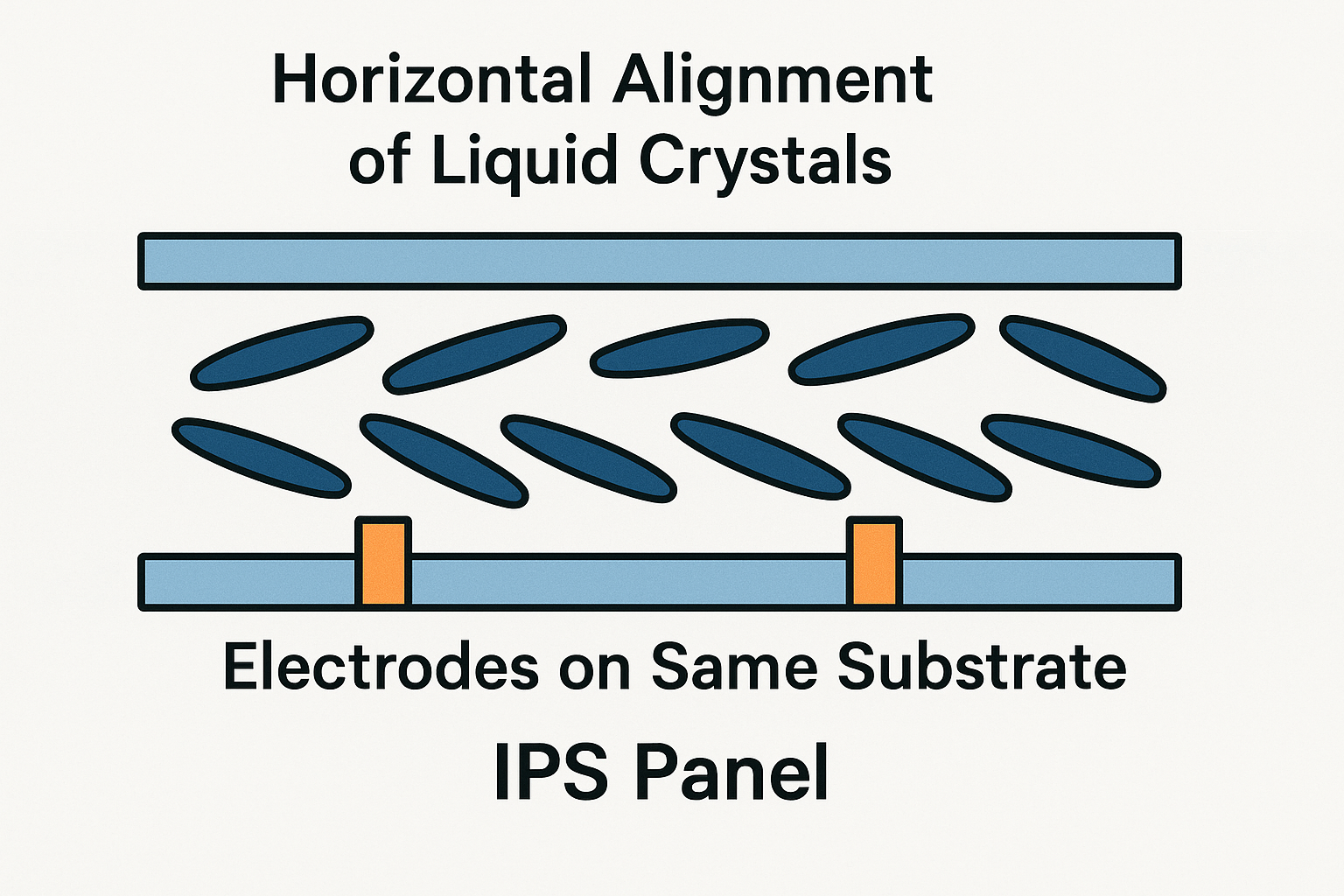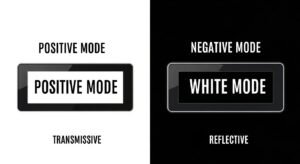
I’ve been working with LCD modules for 13 years now, and I still get calls from clients asking about TN versus IPS panels. It’s not just about price anymore – the technology gap has narrowed significantly.
The main differences between TN and IPS panels lie in their liquid crystal alignment: TN panels twist crystals 90 degrees for faster response times, while IPS panels rotate crystals horizontally for better color accuracy and viewing angles.
Just last week, a client came to me with a industrial HMI display project. They were torn between cost-effective TN panels and premium IPS technology. The decision wasn’t straightforward – it depends on your specific application requirements.
What Is Twisted Nematic (TN) Technology?
TN panels represent one of the oldest LCD technologies, but they’ve evolved significantly since their introduction in the 1970s. These panels remain popular in specific applications where speed and cost matter most.
TN panels use liquid crystals that twist 90 degrees when voltage is applied, creating a simple and efficient light-switching mechanism that enables fast response times and low manufacturing costs.
How Does TN Technology Work?

The core principle of TN technology lies in its twisted nematic liquid crystal arrangement. When no voltage is applied, the liquid crystals naturally align in a twisted formation between two glass substrates. This twisted structure allows polarized light to pass through, creating a bright display.
When voltage is applied, the crystals untwist, blocking light transmission and creating dark pixels. This simple mechanism allows TN panels to achieve extremely fast switching times, often as low as 1 millisecond.
The manufacturing process involves sandwiching a thin layer of liquid crystal material between two glass substrates coated with transparent electrodes. The liquid crystal layer is typically 4-8 micrometers thick and works in conjunction with polarization filters to control light transmission.
What Are TN Panel's Key Characteristics?
TN panels offer several distinctive features that make them suitable for specific applications:
Speed Performance:
- Response times typically range from 1-2 milliseconds
- Support for high refresh rates up to 360Hz and beyond
- Minimal motion blur in fast-moving content
Cost Advantages:
- Lower manufacturing costs compared to IPS panels
- Simpler production process requiring fewer mask layers
- Wide availability across different size ranges
Technical Limitations:
- Narrow viewing angles (170° horizontal, 160° vertical)
- Limited color gamut coverage (typically 100% sRGB)
- Lower contrast ratios (600:1 to 1200:1)
What Is In-Plane Switching (IPS) Technology?
IPS technology emerged in the 1990s as a response to TN panel limitations. This technology revolutionized display quality by addressing color accuracy and viewing angle issues that plagued early LCD panels.
IPS panels align liquid crystals horizontally and rotate them within the same plane when voltage is applied, resulting in superior color reproduction and wide viewing angles up to 178 degrees.
How Does IPS Technology Function?

IPS technology works fundamentally differently from TN panels. Instead of twisting, the liquid crystals in IPS panels are arranged horizontally and remain parallel to the glass substrates. When voltage is applied, these crystals rotate within the same plane – hence the term “in-plane switching”.
The electrode configuration is crucial to IPS functionality. Unlike TN panels where electrodes are positioned on opposite sides, IPS panels use strip electrodes on the same substrate. This creates an inhomogeneous electric field that runs parallel to the substrate surface, enabling the in-plane rotation of liquid crystals.
This design requires two transistors per pixel instead of the single transistor used in TN panels. While this increases manufacturing complexity, it enables the superior visual performance that IPS panels are known for.
What Are IPS Panel's Core Features?
IPS panels deliver several key advantages that make them preferred for professional applications(Which Color Space is Better for LCD Displays?):
Visual Excellence:
- Wide viewing angles up to 178 degrees both horizontally and vertically
- Superior color accuracy with 8-bit or 10-bit color depth
- Consistent brightness and contrast across the entire screen
Color Performance:
- Coverage of 95-100% of DCI-P3 color gamut
- 20-30% more color space than TN panels
- Better grayscale performance and color transitions
Professional Applications:
- Ideal for graphic design and photo editing
- Suitable for collaborative work environments
- Better performance in various lighting conditions
TN vs. IPS
Now let’s compare these two in key technical areas.
Overall, TN is best for speed and budget, IPS for quality and flexibility. Each type wins in different scenarios.
Response Time and Refresh Rate
- TN panels: Often 1-3 ms response, 60-240 Hz refresh
- IPS panels: Usually 4-8 ms, 60-165 Hz
For gamers, the fastest response gives a slight edge to TN. But high-end IPS is catching up, with some panels now at 1 ms(What is touch response time and why is it important for LCD touchscreens?).
Color Accuracy and Gamut
| Panel Type | sRGB Coverage | Color Uniformity |
|---|---|---|
| TN | 60-75% | Poor (off-angle) |
| IPS | 95-100% | Excellent |
Graphic designers and anyone working with images should go with IPS(How Do Manufacturers Ensure Color Accuracy in Production?).
Viewing Angles
- TN: Severe color/contrast shift past 45°
- IPS: Little to no color loss up to 178°
If multiple people need to see the display, or you need to mount the screen vertically, IPS is better(How Can You Improve LCD Viewing Angles?).
Contrast Ratio
- TN: Typical 600:1 to 1000:1
- IPS: 800:1 to 1500:1
IPS panels often look more “punchy” because blacks are deeper and whites are brighter(How Do Dual-Layer LCDs Enhance Contrast Ratios?).
Power Consumption
- TN: More efficient, less backlight needed
- IPS: Uses more power due to extra alignment layers
For battery-powered products, TN may help extend runtime(How can I reduce LCD power consumption in embedded systems?).
Cost
- TN: Lowest on the market
- IPS: 20%-80% more expensive, depending on size and spec
Price is often the main reason customers still choose TN for some projects(How to find a good LCD module manufacturer?).
When to Choose TN or IPS?
Selecting between TN and IPS panels depends on specific application requirements. Each technology excels in different scenarios based on their inherent strengths and limitations.
TN Panels for Competitive Gaming
TN panels remain the preferred choice for competitive gaming applications. Their ultra-fast response times minimize motion blur and ghosting effects that can impact gameplay performance.
Professional esports players often choose TN panels for their speed advantages. Popular among professional gamers, uses Fast-TN technology to achieve superior dynamic image quality.
Gaming Advantages:
- Response times as low as 0.5-1ms
- High refresh rates up to 540Hz
- Minimal input lag for competitive advantages
- Lower cost for budget-conscious gamers
IPS Panels for Professional and Shared Viewing
IPS panels excel in professional environments where color accuracy and viewing angles are crucial. Graphic designers, photographers, and video editors rely on IPS displays for accurate color reproduction.
The wide viewing angles make IPS panels ideal for collaborative work environments. Multiple people can view the screen simultaneously without color distortion.
Professional Benefits:
- Superior color accuracy for design work
- Wide viewing angles for group presentations
- Better performance in various lighting conditions
- Consistent image quality across the screen
General Use and Casual Applications
For general computing and casual gaming, both technologies can be suitable depending on budget and preferences. IPS panels offer better overall image quality, while TN panels provide faster performance at lower cost.
Modern IPS panels have improved response times significantly, making them suitable for casual gaming. However, TN panels remain the budget-friendly option for users who prioritize cost over image quality.
Technical Trade-offs and User Concerns
Every display technology involves trade-offs. Understanding these limitations helps make informed decisions based on specific requirements and use cases.
TN Panel Limitations
TN panels face several inherent limitations that restrict their applications:
Visual Quality Issues:
- Poor viewing angles cause color shifts
- Limited color gamut affects image richness
- Lower contrast ratios impact image depth
Application Restrictions:
- Unsuitable for professional color work
- Poor performance in group viewing scenarios
- Limited effectiveness in bright ambient lighting
IPS Panel Limitations
IPS panels also have drawbacks that users should consider:
Technical Challenges:
- IPS glow phenomenon in dark environments
- Higher power consumption requirements
- Increased manufacturing complexity and cost
Performance Considerations:
- Slightly slower response times than TN panels
- Lower contrast ratios compared to VA panels
- Potential for backlight bleeding
Durability and Lifespan
Both TN and IPS panels typically last 30,000-60,000 hours under normal use conditions. Lifespan depends more on backlight quality and usage patterns than panel technology.
Manufacturing quality affects durability more than panel type. High-quality TN panels can outlast poorly manufactured IPS panels. Proper usage conditions and regular maintenance extend the lifespan of both technologies.
TN and IPS in the Display Ecosystem
Understanding how TN and IPS panels fit within the broader display ecosystem helps appreciate their roles and future prospects.
Comparison with VA Panels
VA (Vertical Alignment) panels represent the third major LCD technology, offering different trade-offs:
VA Panel Characteristics:
- Highest contrast ratios (2500:1 to 4000:1)
- Better black levels than TN or IPS
- Moderate viewing angles between TN and IPS
- Slower response times than both TN and IPS
VA panels excel in applications requiring high contrast, such as movie viewing and cinematic gaming. They provide deeper blacks than IPS panels while maintaining better viewing angles than TN panels(How Do TN, IPS, and VA LCD Panels Affect Backlighting System Design?).
Emerging Technologies and Variants
Display technology continues evolving with new innovations:
OLED Technology(What is the difference between OLED and AMOLED? What are its advantages?):
- Perfect blacks with infinite contrast ratios
- Fastest response times (<1ms)
- Wide color gamuts and excellent viewing angles
- Higher costs and potential burn-in issues
Mini-LED and Micro-LED(LED Backlight Technology Analysis: CCFL, WLED, DLED, ELED, and FALED):
- Improved backlighting for better contrast
- Higher peak brightness levels
- Better HDR performance
- Gradually replacing traditional backlighting
LED Backlighting and HDR
Modern LCD panels, including both TN and IPS types, use LED backlighting exclusively. This shift from CCFL backlighting has improved energy efficiency and enabled thinner designs.
HDR (High Dynamic Range) support depends on backlight technology rather than panel type. Both TN and IPS panels can support HDR when paired with appropriate backlighting systems(What Is HDR on a Monitor?).
HDR Considerations:
- IPS panels generally perform better in HDR content
- TN panels can support HDR but with limited color gamut
- VA panels often excel in HDR applications due to higher contrast
The future of display technology points toward OLED and emerging technologies for premium applications, while LCD panels continue serving cost-sensitive markets. TN panels maintain relevance in gaming and industrial applications, while IPS panels dominate professional and consumer markets requiring color accuracy(Why Do LCDs Need 1,500 Nits Peak Brightness for HDR?).
Conclusion
The choice between TN and IPS panels depends on specific application requirements, budget constraints, and performance priorities. Both technologies continue evolving to meet diverse market needs.
FAQ
Can I use TN and IPS panels in outdoor or industrial environments?
Both TN and IPS panels can be used outdoors or in factories, but you must choose models with high brightness and good temperature resistance for outdoor or harsh environments.
Do TN or IPS panels suffer from image retention or burn-in?
Both TN and IPS LCDs are not prone to permanent burn-in like OLED; however, some temporary image retention can happen after showing static content for a long time, but it usually disappears after normal use.
Is there a risk of dead pixels with TN or IPS displays?
All LCD panels, including TN and IPS, may have a few dead pixels, but our factories have strict quality control and offer warranty policies to handle such rare cases.
Can I upgrade from TN to IPS in an existing product design?
Switching from TN to IPS usually requires changes in mechanical design, thickness, and sometimes interface adjustments, so you should check compatibility before upgrading your module.
Which panel type is better for touch screen applications?
IPS panels are usually preferred for touch screens due to better color, viewing angles, and user experience, especially in devices that are shared or used by multiple people.







